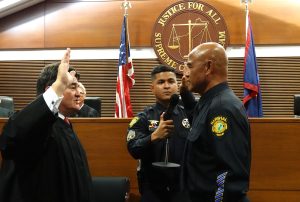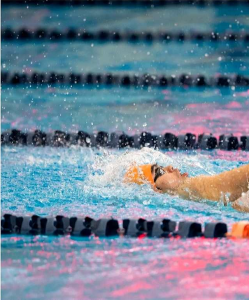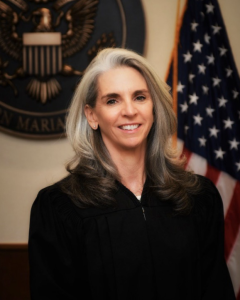‘Response time to Susupe blaze was within parameters’
Norita

Firemen’s response time to the fire that burned an apartment/barracks in Susupe last Thursday was within response parameters, according to Commissioner Claudio K. Norita of the Department of Fire and Emergency Medical Services.
At a press briefing yesterday, Norita also denied allegations that a couple of fire trucks that responded contained no water.
Norita said the first to arrive at the scene were rescue 1 and medics 4 from the Susupe fire station and indeed they have no water.
The rescue 1 vehicle contains equipment like the jaws of life and other rescue gear, while medics 4 is an ambulance, said DFEMS spokesman Derek Gersonde.
Norita said the rescue 1 and medics 4 vehicles arrived at the scene at 5:26pm, three minutes after DFEMS received a report about the structure fire.
With respect to fire trucks, Norita said engine 1 from the Kagman fire station was the first to arrive at the scene at 5:34pm, while engine 2 from the Garapan fire station arrived at 5:41pm.
The call about the fire was made at 5:23pm.
Fire captain Jesse Mesa reported that the fire was contained at 6:33pm and placed under control at 7:25pm.
As to the concerns of some residents that the blaze wouldn’t have engulfed the entire apartment if firefighters immediately sprayed water onto the affected unit, Norita said that firefighters are trained and certified.
“They know what they are doing,” said Norita, adding that how they fight the fire depends on the supervisor’s assessment of the situation.
The commissioner stressed that bystanders or occupants of the affected structure are not allowed to help firefighters.
Norita said a fire truck’s tank only has 1,000 gallon of water,which can be used up in just three minutes.
He noted the fire scene had no active fire hydrants in the area so the Commonwealth Utilities Corp. had to activate the hydrants.
It was at 6:47pm that a request was made to CUC Water Division to turn on available fire hydrants in the area, according to DFEMS report. The hydrants were activated at 7:19pm.
Fire investigators ruled that the fire wasn’t set off intentionally but was electrical and accidental in nature. Norita said investigation looks in that direction and determined that someone had left a gas stove unattended.
The fire burned a semi-concrete apartment/barracks on Tupak Street corner Tokcha Avenue in Susupe, displacing several people, mostly construction workers.







It should, I repeat, It should NOT taken that long to put that fire out.
So Mr Norita. You are saying that it is within parameters for water to be available from hydrants to fight a fire nearly two hours after a call was received about a fire. If that is acceptable to you then we can all look forward to our structures burning to the ground.
Call received at 5:23 pm, water available at hydrants at 7:19 pm. It took until 6:47 pm for someone to request that the hydrants be activated. Really?? You sit and watch the building burn for an hour before you think to ask for the water to be turned on to the hydrants? Knowing that your water tender carries only enough water to fight a fire for 3 minutes according to your own words. Am I missing something?
If you sit there in your big chair and defend this type of gross incompetence then you should be tendering your resignation immediately. you political hack. You certainly are missing what it takes to administrate a public safety organization.
I guess I am missing something here as to WHY there is no water in the fire hydrant systems? I hve never heard of this practice before, ANYWHERE.
I could possibly understand if there was a chance of the water getting frozen in the pipes. But since there were (are) workable fire hydrants in the area why no water and a reques has to be made to “energise” them. Is the standard in other areas also on Saipan. I know this has not been the case on Tinian past. OR is this a Clyde thing?
Since the fire Hydrants are not an outlet for any everyday use that would have water flowing through them (except for use by FD personnel, then being energized at all time and ready for an emergency would not have any effect on a cause for low water pressure in the CUC system. It would litterally be standing water in the pipe. UNLESS this system is plagued with leaks as some of the distribution system.
Can anybody please enlighten us?